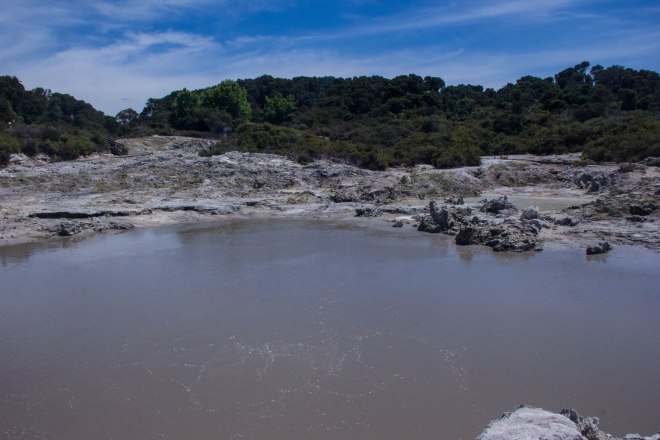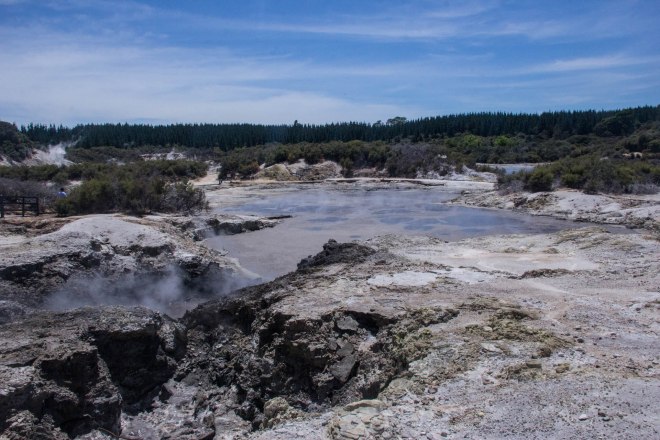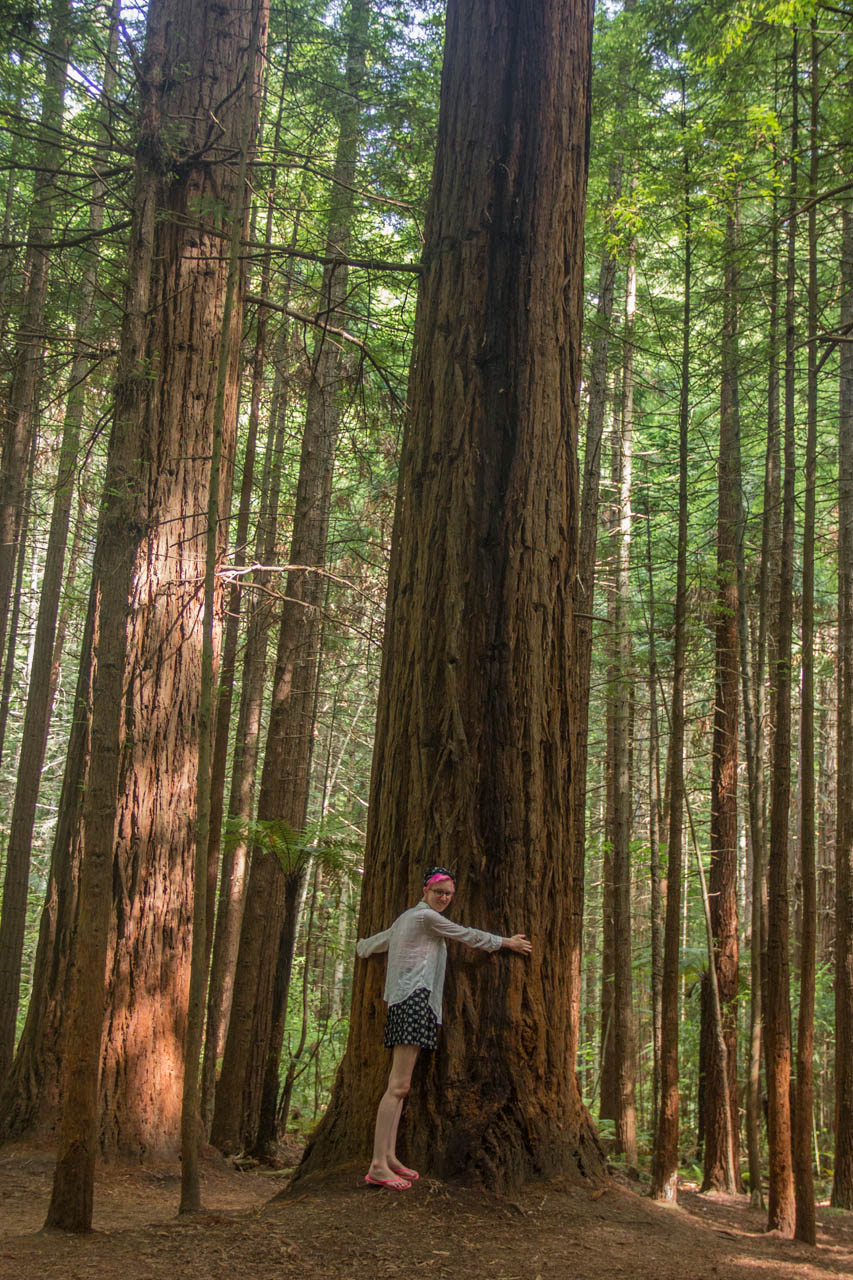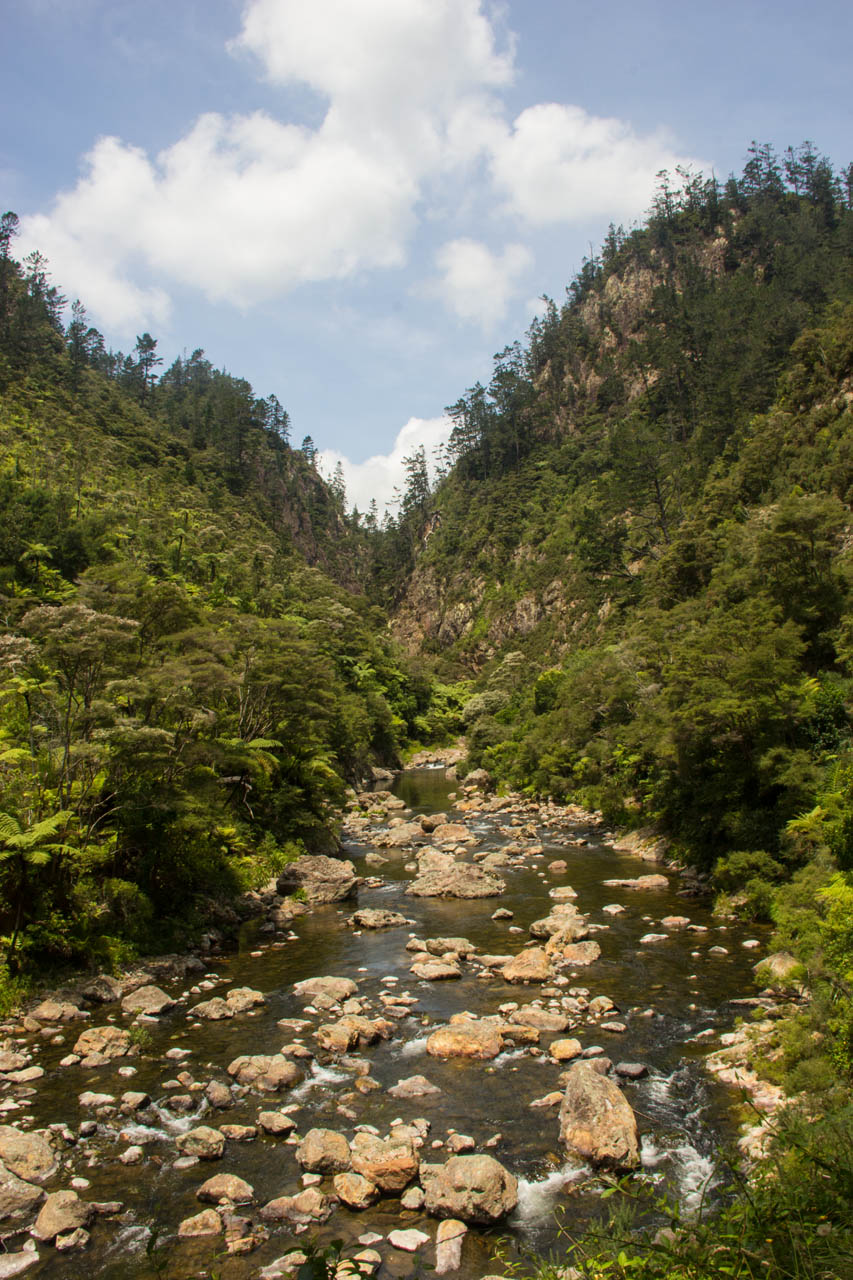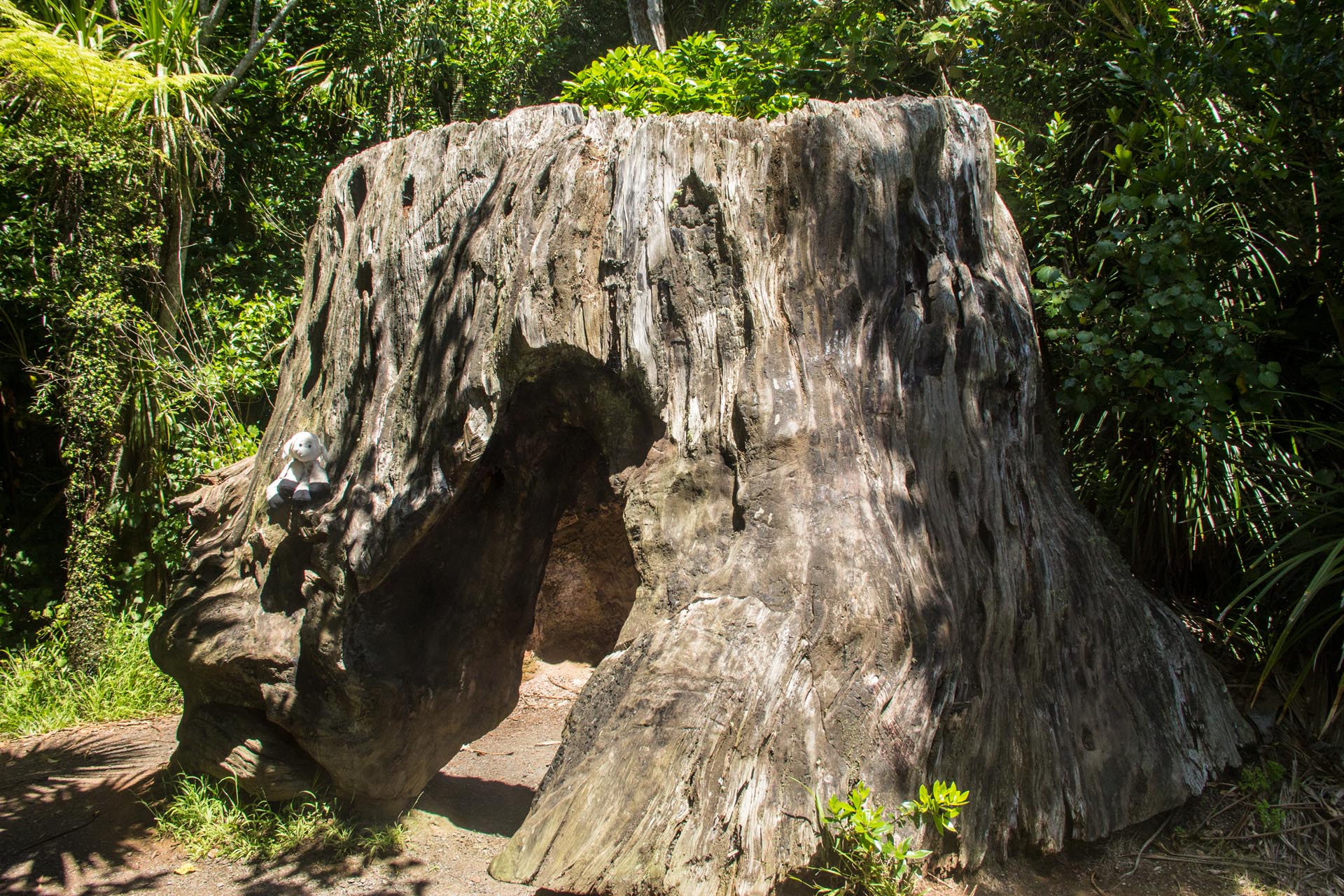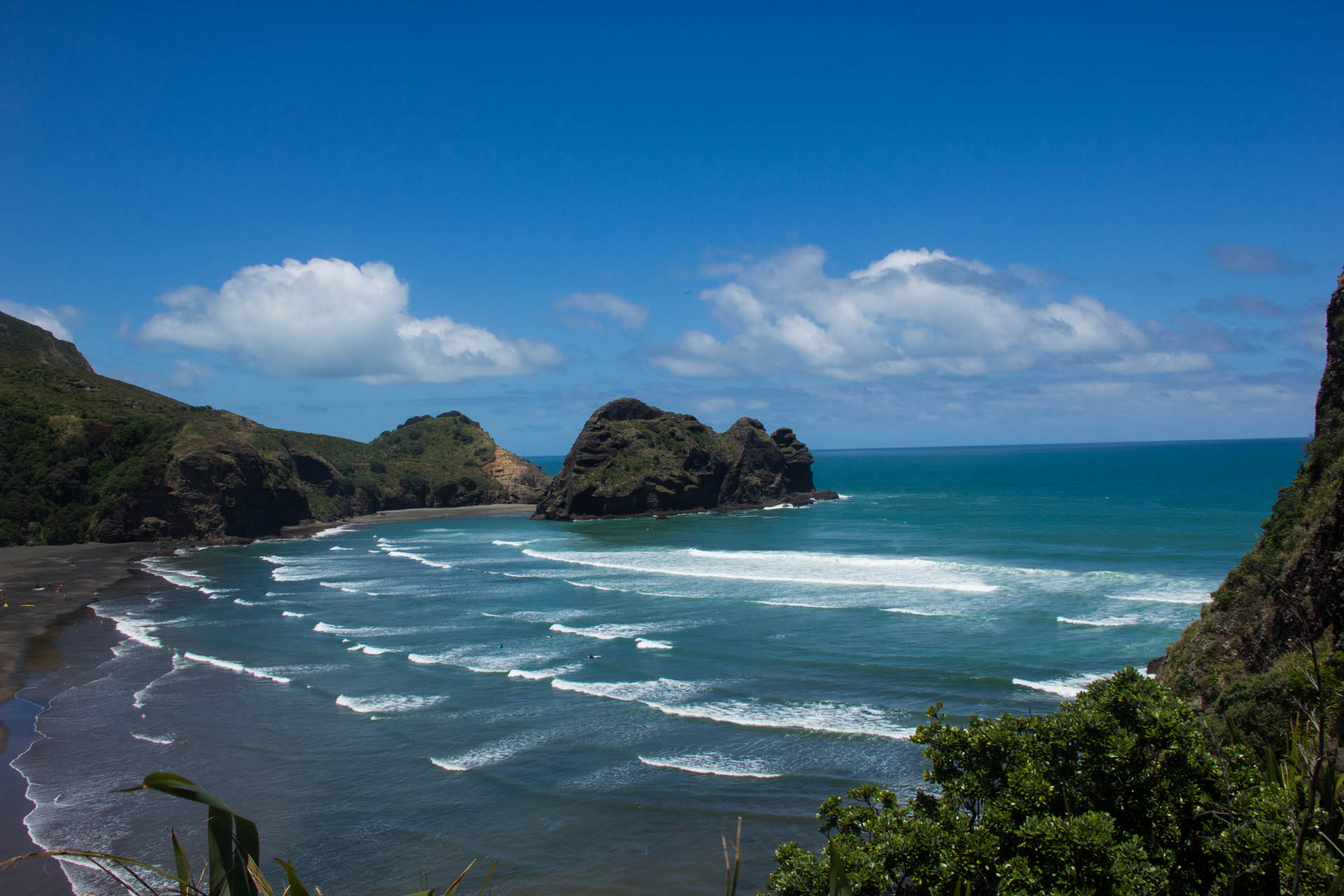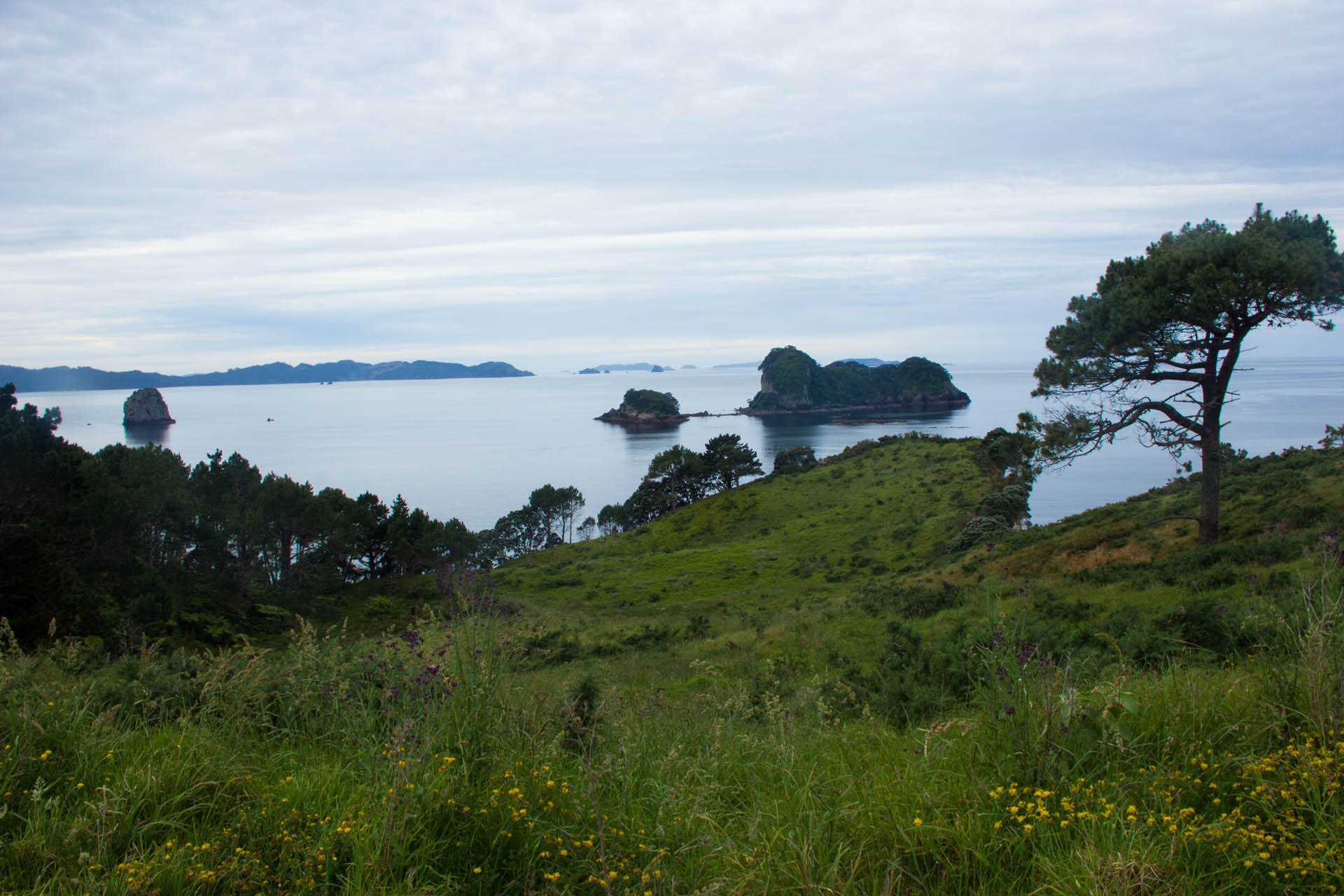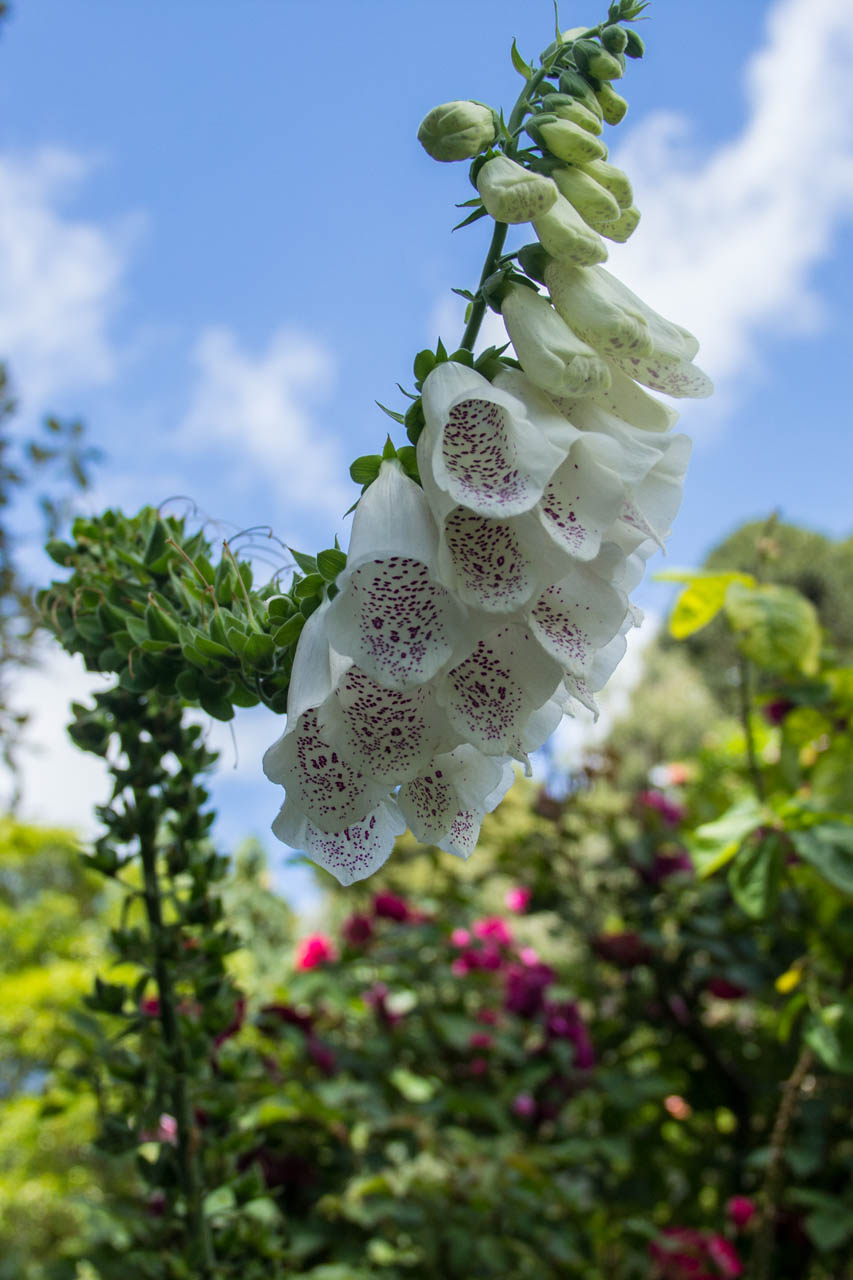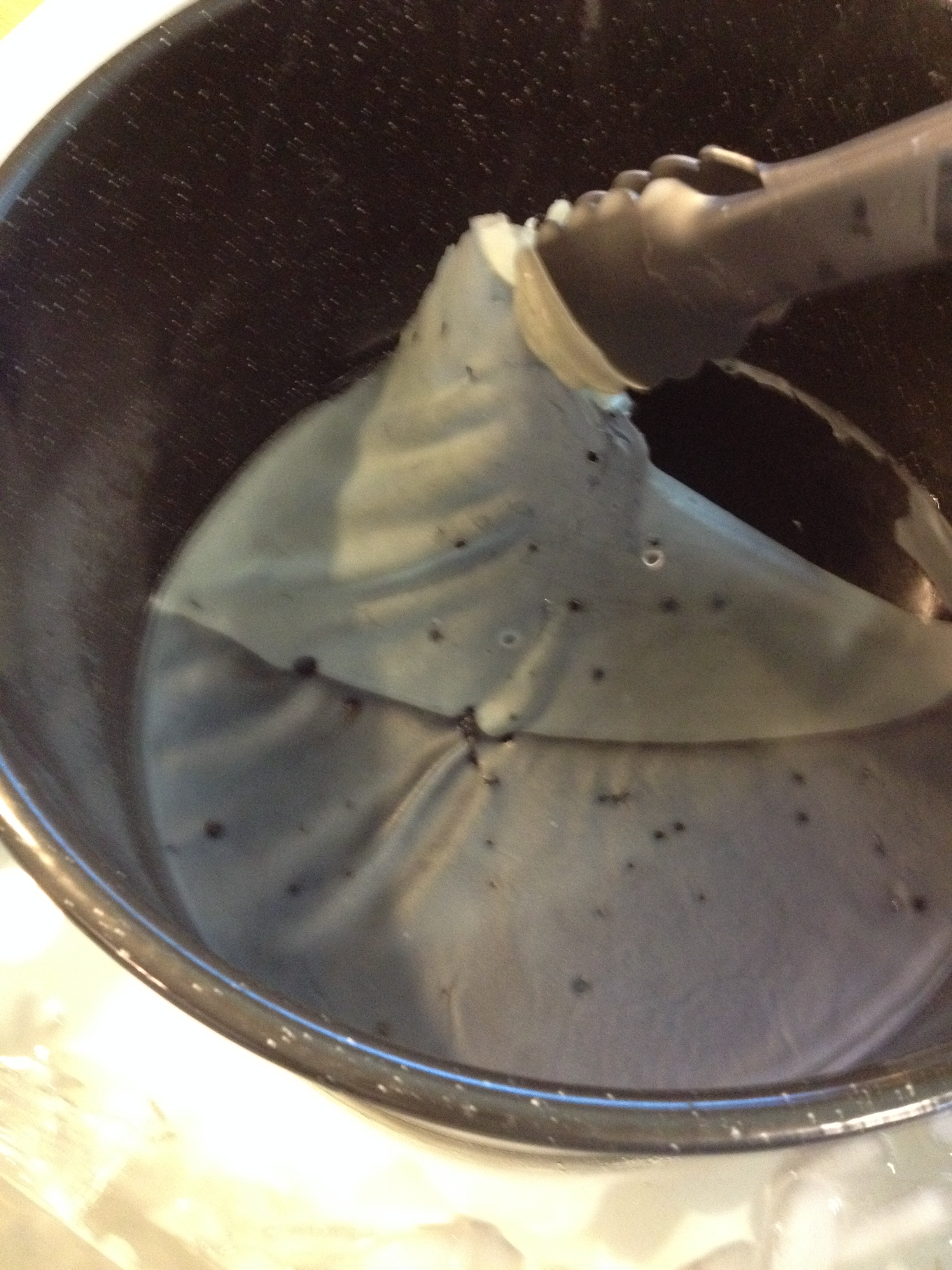Hi again! I've got lots of excitement coming up, and I want to make sure I tell all of you about it, so I'm holding myself accountable to you guys: If I don't post twice this week, you have permission to bop me on the nose. That is all. New Zealand turned out to be beautiful in a lot of different ways- and this little adventure proved to be beautiful in the sort-of-scary, definitely-stay-on-the-path sort of way.
Meet Hell's Gate:
The first thing most people notice when they drive into Rotorua is the smell of sulfur. I have some interesting scent-related handicaps, so I could tell that the air was a little different, but I didn't think it smelled too bad. I was, however, very thoroughly educated on just how bad it smelled to all the other humans.
Hell's Gate (it's non-touristy Māori name is Tikitere), was so-named when George Bernard Shaw visited the area in 1934 and declared that, if his colleagues though he was going to hell for his atheism, these would be the gates of said hell.
The science is even cooler, though. We all learned about plate tectonics in middle school, and most islands (especially in the pacific) are volcanic either in their recent past, or in some cases (ahem- this one)- in their present. Tikitere's existence is present-day evidence of ancient volcanic activity, and it is so cool. 10,000 years ago, an eruption caused the water from this ancient lake to drain- forming two other lakes in the area. The absence of water pressure on this now-dried up lake bed caused faults in the ground below, and steam and gases are still slowly escaping 10,000 years later.
Tikitere has a long history of being used by the Māori as a sacred site, and sometimes for medicinal purposes. More presently, it's become a tourist attraction and a spa. You have to pay to get in, but it's worth it to get to see some of these things up close and personal, and to learn about its history. It takes a little over an hour to walk around all the paths (if you take your time and read the informational signage) and it's a great, flat walk but there's no shade so bring your sunblock and reapply frequently or you'll be as toasty-burnt as the bits and pieces of wayward organic matter scattered around the edges of the hot pools.
Apparently, the Māori took a pretty immediate shining to George Bernard Shaw (maybe something to do with his atheism vs. the Christianity and literal come to Jesus talks they were getting from pretty much everyone else at the time?)- so many of the pools and ominously bubbling cracks in the ground were named by him. These names are displayed alongside the Māori names, which makes for a truly unique mesh of Māori and European values and interests. The signage also displays the average temperature of each pool, and what sorts of gasses come out of it. One reaches temperatures of 252 °F, and another has a pH level of 1. One of the pools (don't scroll down yet, but it is down in the pictures) could even cook a pig in two hours.
Apparently, if you feel the need to cook yourself a pig, this is the place to do it:
Amidst low ropes and a very liberal dusting of "Danger, Don't Step Off The Path" ( if you value your feet) signage, the walkways wind through two areas separated by some very welcome shade and green space- and something pretty awesome sits nestled in the trees:
Fine Lords and Ladies of the Internets, I give you: The tallest hot waterfall in the southern hemisphere!
Okay, It's not that tall. or big, or whatever- but it is bathwater temperature as opposed to the usual frigid river temperatures, and that's pretty cool. The Māori tribe who lived here believed that the water in these falls had strengthening and healing powers, so their warriors bathed in the waterfall before going into battle. They weren't far off the truth- The falls are laced with minerals which, while they may not be able to heal a severed limb, have been proven to speed up healing and help with some skin problems. Kind of like the Roman Baths in England.
As we wandered around between the pools in the second, larger area, things started to heat up even more. Larger than the first, and with not one single solitary shady patch in sight, I began to wonder if we would melt like the mud in the bottoms of these pits. You see, the sun was heating us from above and the ground was heating us from below, and between those two things the usually temperate New Zealand summer became...well... Hell's Gate.
Such steam!
One of the most interesting parts of the whole walk was seeing this area, where a small, freshwater stream met the sulfuric hot pool in steady little puffs of steam. The cool freshwater has allowed for grassy growth, perhaps the only green within the otherwise desolate circle of land.
After our near-melting experience, and learning that our ticket price included getting to soak our feet in some of the mineral water from one of the more hospitable pools, we once again took to the road to continue the apparent volcanic theme of this trip- Meet Lake Tarawera:
Lake Tarawera didn't always look like this. In the early 1800s, this area was home to the Pink and White Terraces- hot bathing pools formed with silica deposits from volcanic activity in the area. Eventually, Mount Tarawera erupted (you see that flat-looking mountain a little to the right of the middle? Yeah. That's Mount Tarawera, and it wasn't always flat...) and the Pink and White Terraces were buried in the fallout. The scarred landscape turned from pink and white to green, and now it's a beautiful, quiet place for some freshwater swimming (The first time I'd experienced that in New Zealand, actually).
On the way back from our volcanic sightseeing, we stopped off to say hello to some very old, very tall trees.
Whakarewarewa Forest is just outside Rotorua, and it's a staggeringly large forest full of staggeringly tall trees. The redwoods aren't the only species around, but they're plentiful nonetheless. We didn't spend too much time in the forest- it's a place I really enjoyed and would like to see more of, but it had been a long, hot day- and I think everyone involved was ready for naptime. Not before I hugged some trees, though...
What an adventure! I love the ones that have a little bit of history involved, and volcanoes are a pretty huge part of New Zealand's history- It wasn't the last we saw of them, either.
Alright, like I said. I'm posting twice this week. To avoid nose-bopping, you see. I assume you're curious about what sorts of crafty, projecty things I got up to while I was between adventures, so I'll tell you all about that, and then we'll be off on a three-part (probably? I might need four...) series of mountain climbing escapades! That's right- I climbed multiple mountains. There's even photographic evidence that this thing happened.


